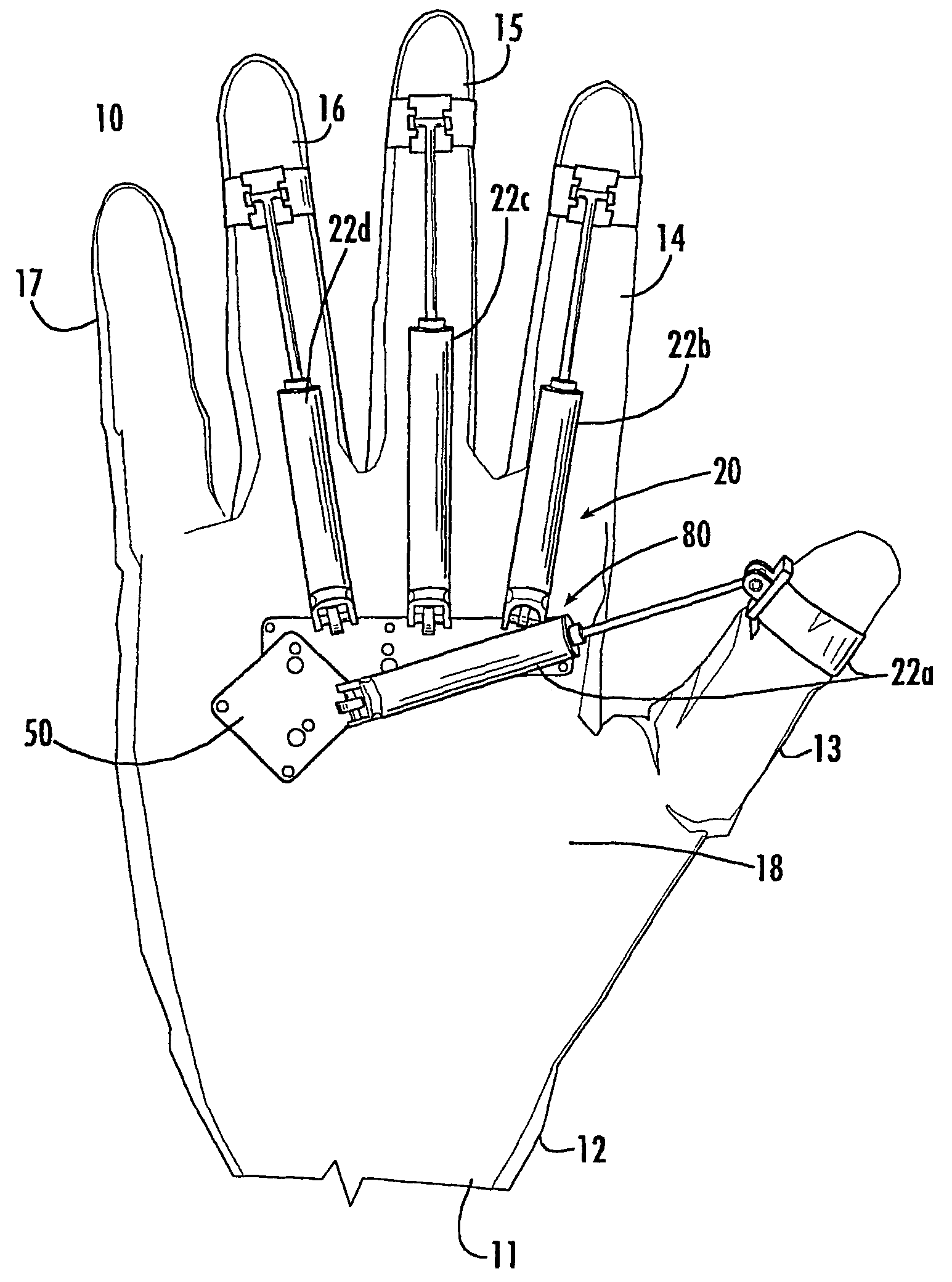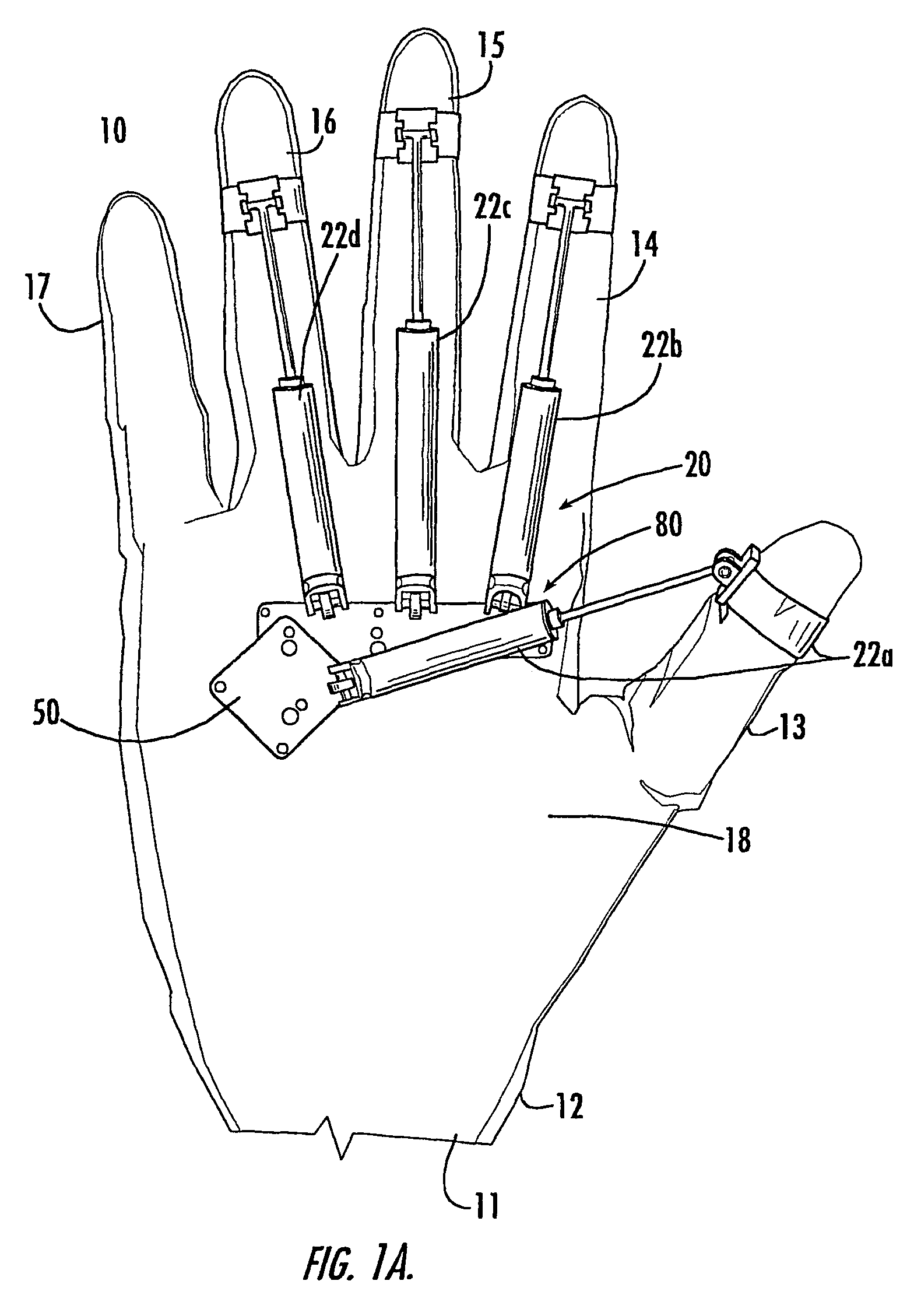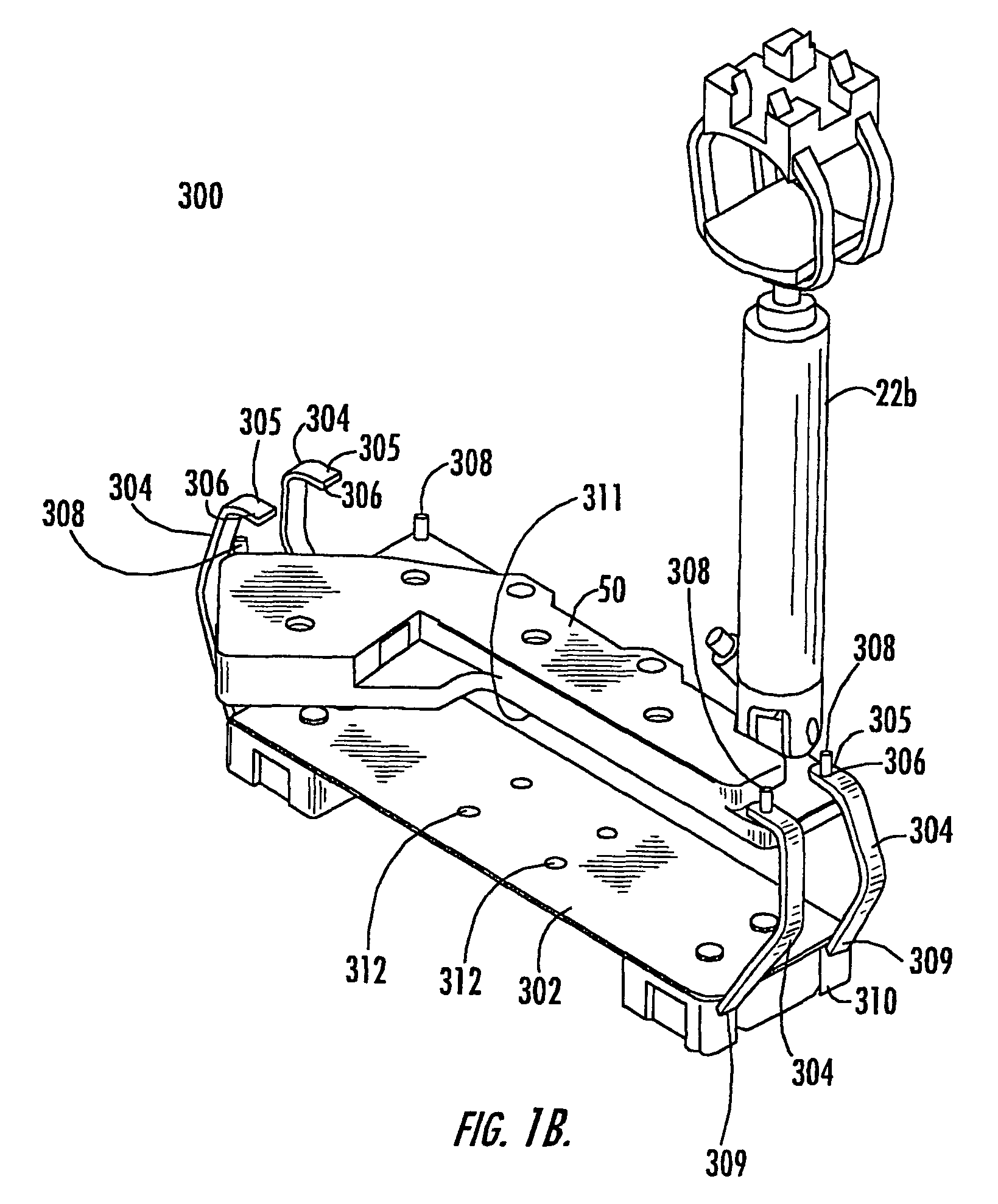Hand force feedback and sensing system
- Summary
- Abstract
- Description
- Claims
- Application Information
AI Technical Summary
Benefits of technology
Problems solved by technology
Method used
Image
Examples
Embodiment Construction
[0041]Reference will now be made in greater detail to a preferred embodiment of the invention, an example of which is illustrated in the accompanying drawings. Wherever possible, the same reference numerals will be used throughout the drawings and the description to refer to the same or like parts.
[0042]FIG. 1A is a front perspective view of hand force feedback and sensing system 10 in accordance with the teachings of the present invention. System 10 includes actuator system 20 and sensing system 80 coupled by palm base 50 to glove 12. Hand 11 is received in glove 12. Hand 11 has thumb digit 13, index finger digit 14, middle finger digit 15, ring finger digit 16 and little finger digit 17 each connected to palm portion 18. Preferably, actuator system 20, sensing system 80 and palm base 50 are lightweight. For example, system 10 can weigh less than about 100 g.
[0043]Actuator system 20 comprises actuators 22a, 22b, 22c and 22d which respectfully provide force feedback against thumb di...
PUM
 Login to View More
Login to View More Abstract
Description
Claims
Application Information
 Login to View More
Login to View More - R&D
- Intellectual Property
- Life Sciences
- Materials
- Tech Scout
- Unparalleled Data Quality
- Higher Quality Content
- 60% Fewer Hallucinations
Browse by: Latest US Patents, China's latest patents, Technical Efficacy Thesaurus, Application Domain, Technology Topic, Popular Technical Reports.
© 2025 PatSnap. All rights reserved.Legal|Privacy policy|Modern Slavery Act Transparency Statement|Sitemap|About US| Contact US: help@patsnap.com



